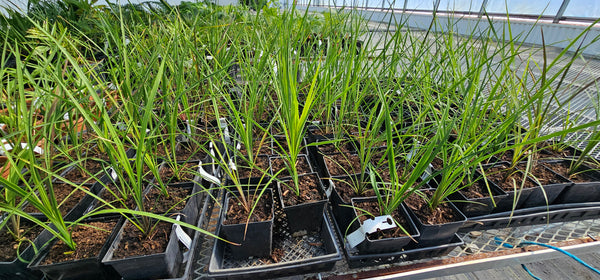Cordyline australe CABBAGE TREE
Shipping calculated at checkout
112 in stock
Need more? Contact us
🌴 Cordyline australis — the New Zealand “Cabbage tree.”
🔍Overview
- Scientific name: Cordyline australis
- Family: Asparagaceae
- Origin: New Zealand
- Common name: Cabbage tree, cabbage palm (sometimes in French), tī kōuka (Maori name)
🌿Description
- Size: Up to 15 to 20 meters tall in its natural habitat, but often smaller in cultivation.
- Leaves: Long, narrow, stiff, light green to dark green, often arranged in rosettes at the top of the branches.
- Habit: Tree-like appearance, often branched, with a thin, smooth trunk.
- Flowers: White to cream, very fragrant, in large upright panicles.
- Fruits: Small white or bluish berries, popular with birds.
🌡️ Climate and hardiness
- Relatively hardy: down to -23°F for well-established specimens.
- Prefers temperate to mild climates, but can adapt to cooler climates with protection.
- Resistant to wind, drought, and salt spray (perfect for coastal areas).
🌱 Cultivation
- Exposure: Full sun or partial shade.
- Soil: Well-drained, light, not too calcareous.
- Watering: Moderate; drought-resistant once mature.
- Propagation: By seed (slow growth) or by suckers at the base.
🌎Uses and interest
- Ornamental: Very popular in gardens for its architectural and exotic appearance.
- Potted cultivation: Possible in containers, especially in cold climates (bring indoors or protect in winter).
- Traditional uses: The Maori used the young leaves as food (hence the name “cabbage tree”). Fibers were also extracted for ropes, baskets, etc.
⚠️ Note
There are other Cordylines often called “cabbage palm” or “cabbage tree”:
- Cordyline fruticosa (tropical plant, often red or variegated)
- Cordyline indivisa (rarer species, with wider leaves)
- Not to be confused with certain tropical palms or the Cabbage palmetto (Sabal palmetto) from the United States.


